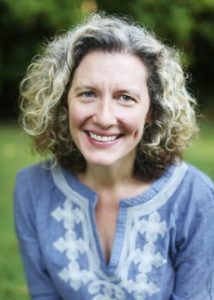The COVID-19 pandemic has changed all our lives. It’s also introduced many of us to some new concepts, such as contact tracing: a tried-and-true public health tool that’s now of crucial importance.

Dr. Emily Gurley ’96 (Photo: Johns Hopkins Bloomberg School of Public Health)
An effective contact tracing program is a must-have for any re-opening plan, which is why state and local governments are racing to hire as many contact tracers as they can. Some estimates say that the United States will need as many as 200,000 contact tracers to beat the pandemic.
It just so happens that one of the nation’s top experts in contact tracing is an Oglethorpe alumna: Dr. Emily Gurley ’96. In 2010, Dr. Gurley won the Spirit of Oglethorpe Award, as the embodiment of the Oglethorpe motto: Make a life. Make a living. Make a difference.
Over the past decade, Dr. Gurley has continued to live by those words. Now an Associate Scientist at the Johns Hopkins Bloomberg School of Public Health, she most recently led the development of an online course designed to get new contact tracers quickly up to speed.
Dr. Gurley and her Johns Hopkins colleagues created the six-hour course under serious time pressure. “It was a punishing timeline,” Gurley says. “We had about 10 days to put together the content. Something like this would normally take months.”
The course is now available for free on Coursera, and its reach has gone far beyond what anyone imagined: more than half a million people have already enrolled, and 242,000 have completed the course.
Not everyone who takes the course will become a contact tracer, Dr. Gurley says. “A lot of people have enrolled just because they crave reliable information about coronavirus, about what contract tracing programs are, and what they can do to protect themselves.”
So what is contact tracing? And how can it help keep us safe?
In short, it’s about identifying people who have been infected or may have been exposed to the virus — and helping them to change their behavior and limit contact with others so that they do not infect them.
To understand how contact tracing works for COVID-19, you should know that people can be contagious even if they don’t feel sick. Sometimes that’s because they have a mild case without any noticeable symptoms. Other times, it takes a few days for symptoms to show up.
So if you test positive for the virus, you may have already infected several others, even if you weren’t feeling sick when you were around them. And they may now be contagious without knowing it, just like you were.
Contact tracers interrupt that cycle. As soon as a person tests positive for the virus, contact tracers interview them about where they went and what they did. Then, the contact tracer informs anyone who might have been infected.
Since coronavirus spreads quickly, and testing has remained slow in some areas, contact tracers are often in a race against time. They may only have two or three days to finish a case before the next round of transmission begins.
“Contact tracing isn’t new, but the scale and speed we need for this disease is larger than ever before,” Dr. Gurley says.
The free training course covers all that and more, including ethical considerations in contact tracing and tips for effective communication. “The idea is that if someone takes this course, and then gets hired, they’ll be ready to pick up with the more in-depth training from their local health department.”
For Dr. Gurley, the COVID-19 pandemic is the kind of public health crisis she’s spent her whole career studying — and working to prevent. Her expertise is infectious diseases that are transmitted from animals to humans. In particular, she’s made great contributions to understanding the epidemiology and ecology of Nipah virus, which has caused deadly outbreaks in Malaysia, Singapore, India and Bangladesh (the primary site of her research).
Since the COVID-19 pandemic hit, she’s turned her attention to sharing what she knows. Beyond the popular Coursera course — and a number of appearances on national news (like CNBC and ABC News) explaining what contact tracing means for viewers at home — Dr. Gurley has been hard at work on a couple additional projects.
One of those projects is another course, which launched on July 27. This course will help contact tracing managers to better assess the impact of the programs they run — particularly to figure out what’s working and what’s not. “Most of these are newer programs and trying to ramp up,” says Dr. Gurley. “They might not know where to focus first to get better.”
That course is supported by an app, ConTESSA, also developed by Dr. Gurley and colleagues in the Infectious Diseases Dynamics Group at Johns Hopkins Bloomberg School of Public Health and Wake Forest University. ConTESSA stands for “Contact Tracing Evaluation and Strategic Support Application.” Powered by mathematical models, it provides detailed practical assessments for contact tracing program managers, based on their own program numbers.
